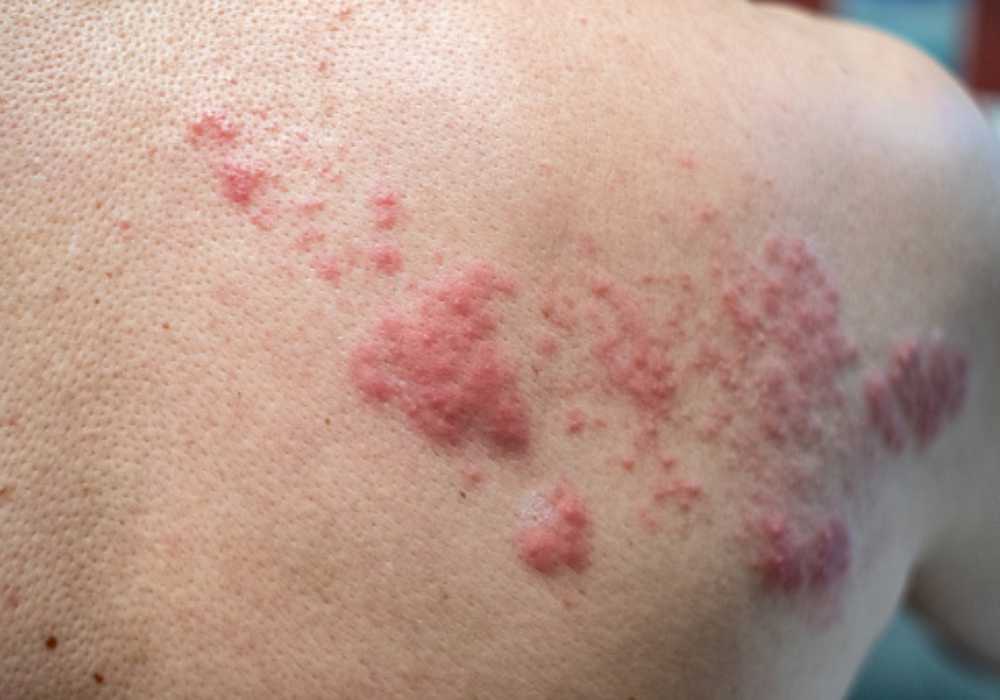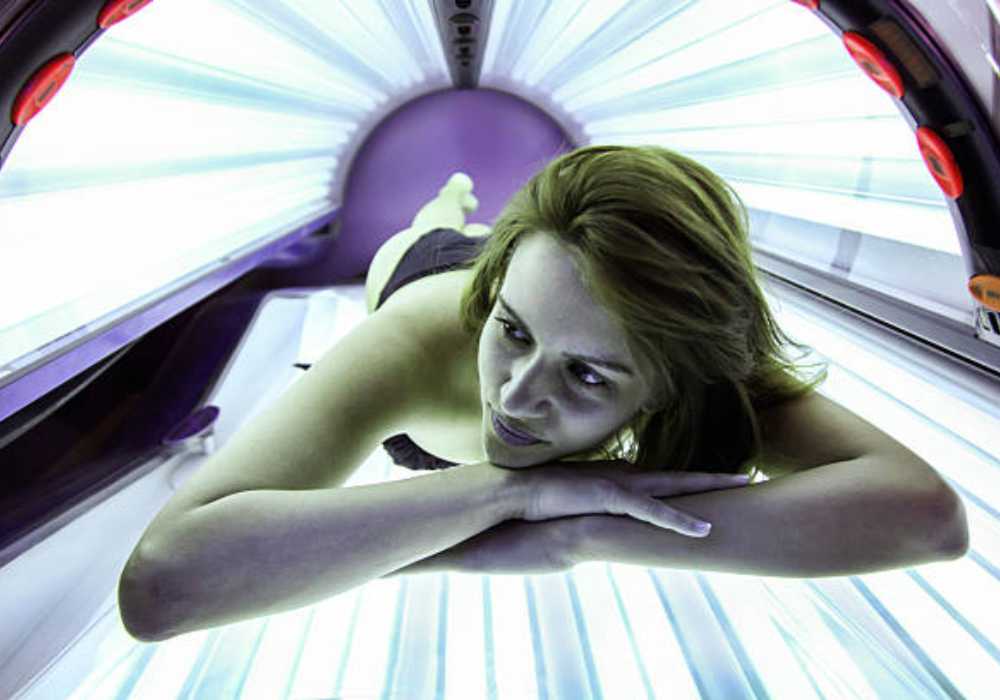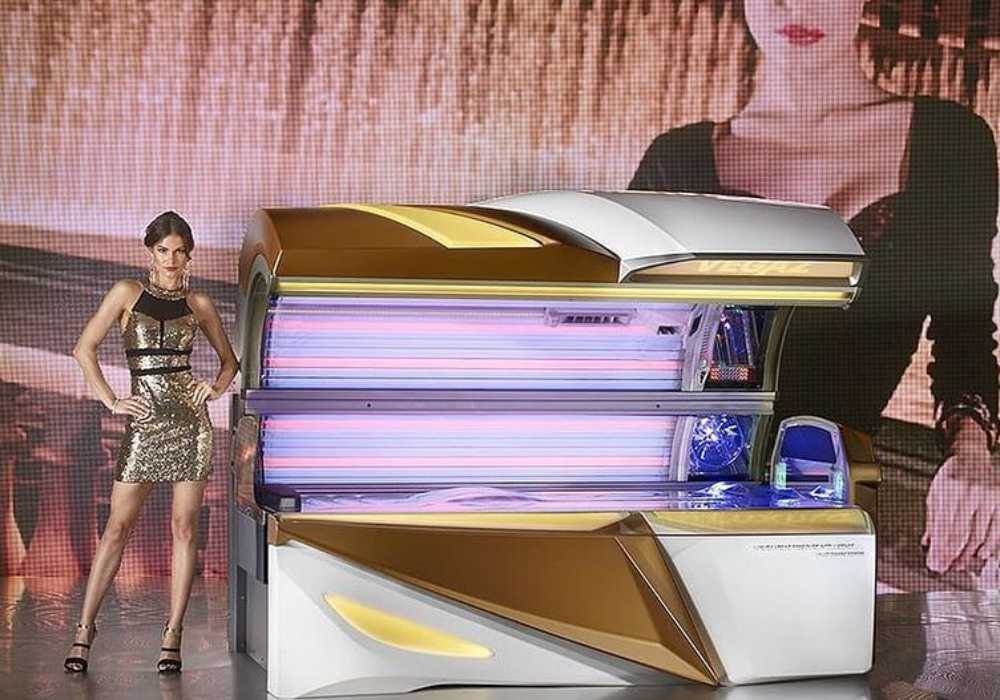As an Affiliate, We may earn a commission that doesn't cost you extra from qualifying purchases using links in this post. It helps keeps this blog running.
A tanning bed (or sunbed) is a device that emits ultraviolet radiation (UV), primarily UVA, to produce a tanned appearance. The amount of UVA emitted by a tanning bed is about five times the amount of UVA emitted by the sun.
Tanning beds are the newest trend in the skincare industry. These devices emit ultraviolet light to stimulate your skin’s natural production of a dark pigment called melanin. This is the same process that occurs in natural sunbathing but in a more controlled way.
There are risks associated with tanning beds such as early aging of the skin, increased risk for squamous cell carcinoma, eye damage (cataracts and macular degeneration) which can be prevented with tanning goggles.
Read A Specific Section
Can You Get Skin Rash From A Tanning Bed?
Yes, it is possible to get a skin rash from a tanning bed. A tanning bed rash, also known as solar dermatitis, is an itchy red skin rash that develops on the skin that has been exposed to ultraviolet rays from a tanning machine. There are other names for this condition which include: “erythema ab igne”, “hot-tub” rash and sunbed dermatitis.
Some people are more prone to developing skin rashes after tanning than others. Those with fair skin or sensitive skin are more likely to experience a reaction when using a tanning bed, as are those who use tanning beds frequently. If you have any doubts about whether you are susceptible to getting a rash from tanning, it is best to consult with your doctor.
If you do develop a rash after tanning, there are some steps that you can take to help relieve the symptoms.
Steps like:
- Applying cool compresses
- Using over-the-counter anti-itch cream or medications
Which can help with soothing the affected area. If the rash is or has become widespread or does not clear up in 3 days, you should go see your doctor.
If you are consistently getting rashes from using tanning beds, it may be best to avoid tanning beds completely if possible. If you can’t and decide to continue using a tanning bed, be sure not to use it too much so you don’t induce any unnecessary damage. Also, talk with your health care provider about your reactions if you are unclear about what they are.
Skin rashes can affect anyone who experiences frequent sun exposure, especially in hot weather when sweat builds up on the skin. It is important to drink plenty of water to stay hydrated and to use moisturizing creams in order to prevent a skin rash. When you’re heading outdoors, be sure to apply sunscreen with an SPF of 30 or higher, and reapply every two hours. Also, try to stay in the shade as much as possible, and avoid staying out in the sun for too long.
What Causes Tanning Bed Rashes?
Tanning bed rash is similar to sunburn in many ways and occurs when your skin becomes dry as a result of getting too much UV radiation from the tanning bed lamp. Normally, the itchy redness that develops on your skin usually goes away within two days, and in some cases, however, it may get worse – this is known as polymorphous light eruption (PMLE). PMLE is characterized by small bumps on the affected area which turn into blisters overnight.
Although sunburn is one of the most common causes of skin rash after tanning. There are also several other possible causes of rashes after using a tanning bed, and you may be at a higher risk for developing a skin rash after using a tanning bed if you have:
- A dry skin type
- A history of eczema or psoriasis
- Sensitive skin that is prone to irritation
- Frequent sun exposure without proper protection
All of these factors can make you more susceptible to a skin rash, especially if you use tanning beds too often.
Is It Possible To Be Allergic To Tanning Beds?
Yes, it is possible to be allergic to tanning beds. Just like any other type of allergy, a person’s reaction to the sunbeds will depend on their individual sensitivity level. The only difference is that a person’s reaction to sunbeds can be much more serious or even life-threatening.
People who are allergic to the ultraviolet (UV) rays made by tanning beds will have their allergy symptoms triggered when their skin is exposed to these types of lights. These symptoms may include redness, burning, and itching on the skin; swelling; headache; fever; fatigue; nausea; and fainting. Some individuals may experience asthma-like symptoms such as wheezing, tightness of the chest, or difficulty breathing.
How To Know If You’re Allergic To Tanning Beds
Although it is rare, allergic reactions to tanning beds are possible and there has been one case study reported in the American Journal of Clinical Dermatology that described a lady that suffered from anaphylaxis due to exposure to UVA rays emitted by a tanning bed. The following are ways to know if you’re allergic to Tanning Beds.
- Redness around the eyes or swollen eyelids.
- Sneezing or nasal congestion.
- Wheezing or shortness of breath.
- Hives or welts on the face.
- Itching around the eyes, face, or lips.
- Dizziness or lightheadedness
- Swelling in the hands.
Symptoms Of A Tanning Bed Rash
Some other tanning bed rashes symptoms also include:
- Dark red rash around the area exposed to ultraviolet rays
- An itchy, stinging sensation
- Burning Sensation on the affected area
- Swelling/Inflammation of the affected area
- Extremely Warm Skin
What Does Tanning Bed Rashes Look Like On The Skin?

The rashes usually look like small plaques or developing tanning bed bumps. Sometimes they can appear red or raw-looking around the edges. They will generally be itchy and/or painful. The areas of the body most often affected are the neck, chest, shoulders, hands, and face – since these parts of the body get hit with the highest doses of UVB radiation when using a tanning bed.
How To Stop And Prevent Tanning Bed Rashes And Itches
Tanning bed rashes and itching is caused by your skin not being protected from the UVA rays. If you follow the below steps, the rashes and itching can be prevented and stopped in their tracks.
- Using Moisurizing Lotion
Using a moisturizing lotion is very important when using a tanning bed because it allows the skin to absorb less UV light and protects the pores from widening due to heat exposure. It also helps to keep the skin moist which helps prevent over-drying, peeling, or flaking that can lead to or worsen any irritation or damage on the skin’s surface.
When choosing a lotion for use in a tanning booth, it is important to find one that contains SPF 30 or higher. Sunscreen is key when using a tanning booth because it helps to protect the skin from sunburn and melanoma. Look for a sunscreen that also contains ingredients like titanium dioxide and zinc oxide which help reflect and scatter UVA and UVB rays.
- Avoid Tanning Bed Rashes And Itching By Wearing Protective Tan through Clothing
Wearing a protective tan through clothing is another way to help avoid tanning bed rashes and itching. Tan through clothing is loose-fitted and made of natural fibers like cotton, making them the best to wear when having a tanning session.
Synthetic materials like polyester can trap sweat and heat against the skin, leading to irritation. Tight-fitting clothes can also restrict airflow and prevent sweat from evaporating, which can also lead to skin irritation.
- Shower After Tanning
Taking a shower after tanning is another way to help prevent post-tanning bed rashes and itching. Showering helps cool the skin and remove perspiration, it also gets rid of excess lotion or sunscreen that may be left on the skin.
- Stay Hydrated
Finally, Staying hydrated is key in preventing tanning bed rashes and itching. Dehydration can occur when the body loses more fluid than it takes in. When dehydrated, the skin becomes dry, tight, and irritated. Drink plenty of water before, during, and after tanning to help prevent dehydration.
By following these simple steps, you can help stop and prevent tanning bed rashes and itching from occurring.
What You Should Do If You Have Tanning Bed Rash
Even if you have never had a sunburn before, using a tanning bed can cause you to develop a rash. If you develop a rash after using a tanning bed, there are some things that you can do to help alleviate the symptoms. They include the following;
- First, make sure to keep the area moist.
- Apply a cool compress to the affected area and moisturize it regularly.
- Take an antihistamine to help reduce itching and swelling.
- If the rash is severe, or if it does not go away after a few days, you should see your doctor for treatment.
How Long Does Tanning Rash Last?
Most tanning rashes will clear up within two to three days. However, in some cases, the rash may persist for weeks. If the rash does not go away on its own after a few weeks, you may need to seek out your doctor or dermatologist.
How To Get Rid And Treat Rash From Tanning Bed
There are several remedies available to help you get rid of a tanning bed rash. They include,
- Apply a cool compress.
- Use a mild anti-inflammatory cream or ointment, such as hydrocortisone 1% to relieve associated itching and discomfort.
- Do not use antibacterial agents on the rash unless your doctor prescribes them; these agents may make the rash worse. If you have been given an over-the-counter antibiotic, discontinue use immediately if your condition worsens after taking it.
- Avoid exposure to sunlight until the rash has cleared up completely; sun exposure will only exacerbate the problem by irritating already inflamed skin cells.
- Begin using moisturizing body wash before taking a shower to keep skin soft and supple.
- Exercise regularly and drink plenty of water to expedite healing and ensure that your body stays hydrated.
- Avoid tanning beds while the rash heals; if you must use a tanning bed, wear at least SPF 30 sunscreen to minimize UV exposure.
- Seek medical assistance if the rash does not clear up within two weeks or worsens after treatment.
In conclusion, tanning bed rashes are a common side effect of using these devices. Most rashes will clear up within a week or two with home treatments, but in some cases, the rash may persist for longer. If you experience a rash after tanning, be sure to follow the methods that have been listed earlier in this article in an attempt to alleviate symptoms. If the rash worsens, do not hesitate to seek medical attention right away.

I’m Akin, your dedicated Editor-in-Chief and a fervent skincare enthusiast. Self-care is my true passion, and each year, I embark on a thorough exploration of self-tanning products, ranging from lotions to mists. This forms the bedrock of our commitment to delivering top-notch information to our readers. My extensive research and precise product rankings empower you to make informed decisions tailored to your specific skincare needs.
Unlock the Secrets to Achieving Your Ideal Tan with This Comprehensive Checklist



